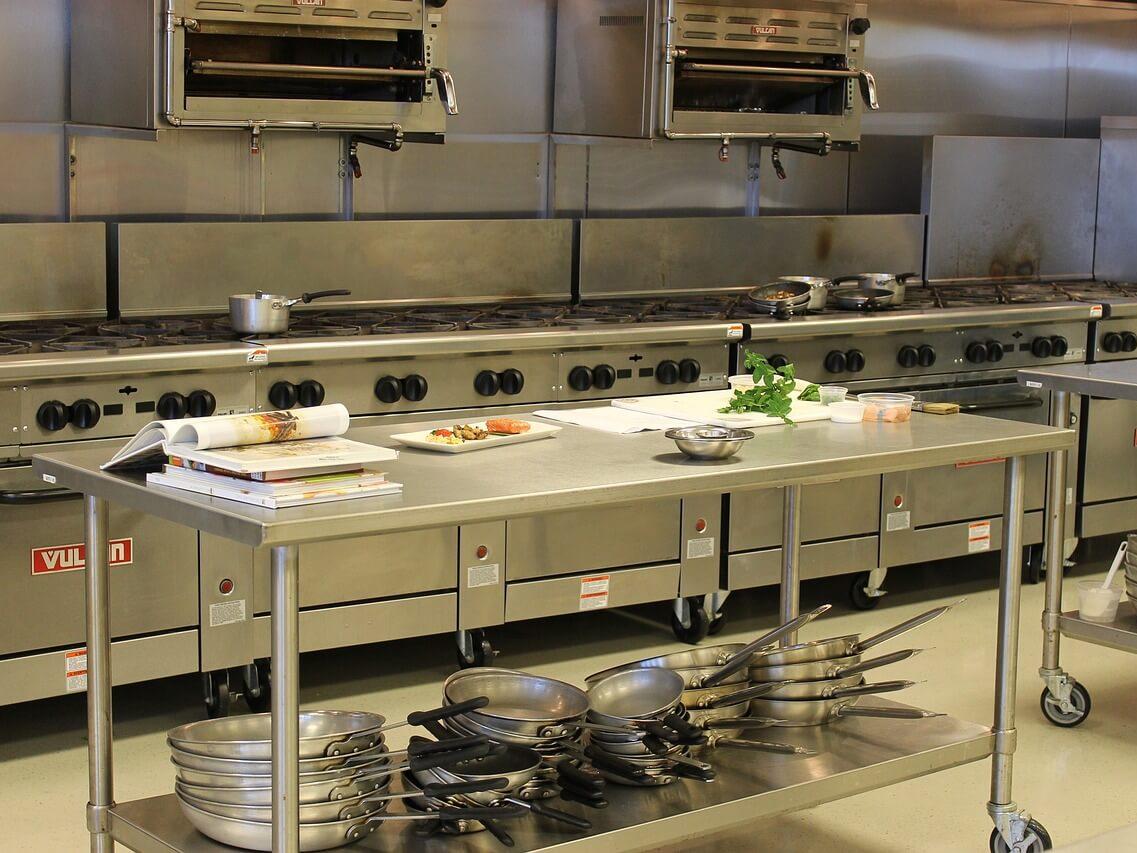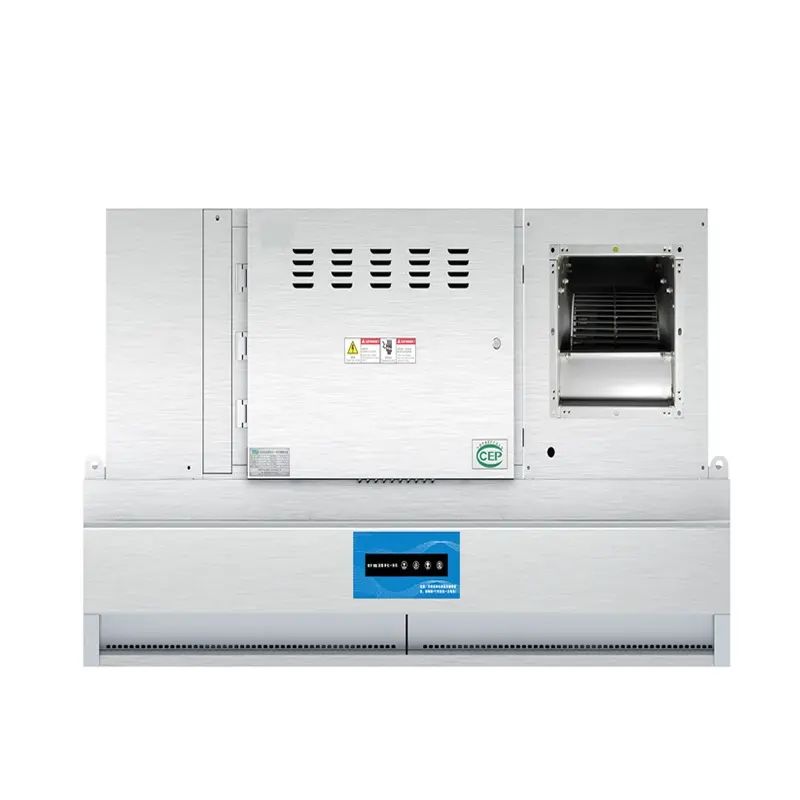A Complete Guide to Commercial Kitchen Ventilation Systems - Ventto Manufacturer
Some government regulations are regulating exhaust standards for commercial kitchens. You must have experienced the harshness of these regulations when applying to open a restaurant. Don’t worry or feel it’s not worth the money to build a commercial kitchen ventilation system because your employees or diners will cook great food or keep coming to your restaurant when they are in a clean and neat environment.
If you don’t want to hire a painter to decorate your soot-stained wall every month or worry about the flames from the gas stove burning some equipment. Please don’t give up on building a commercial kitchen ventilation system.
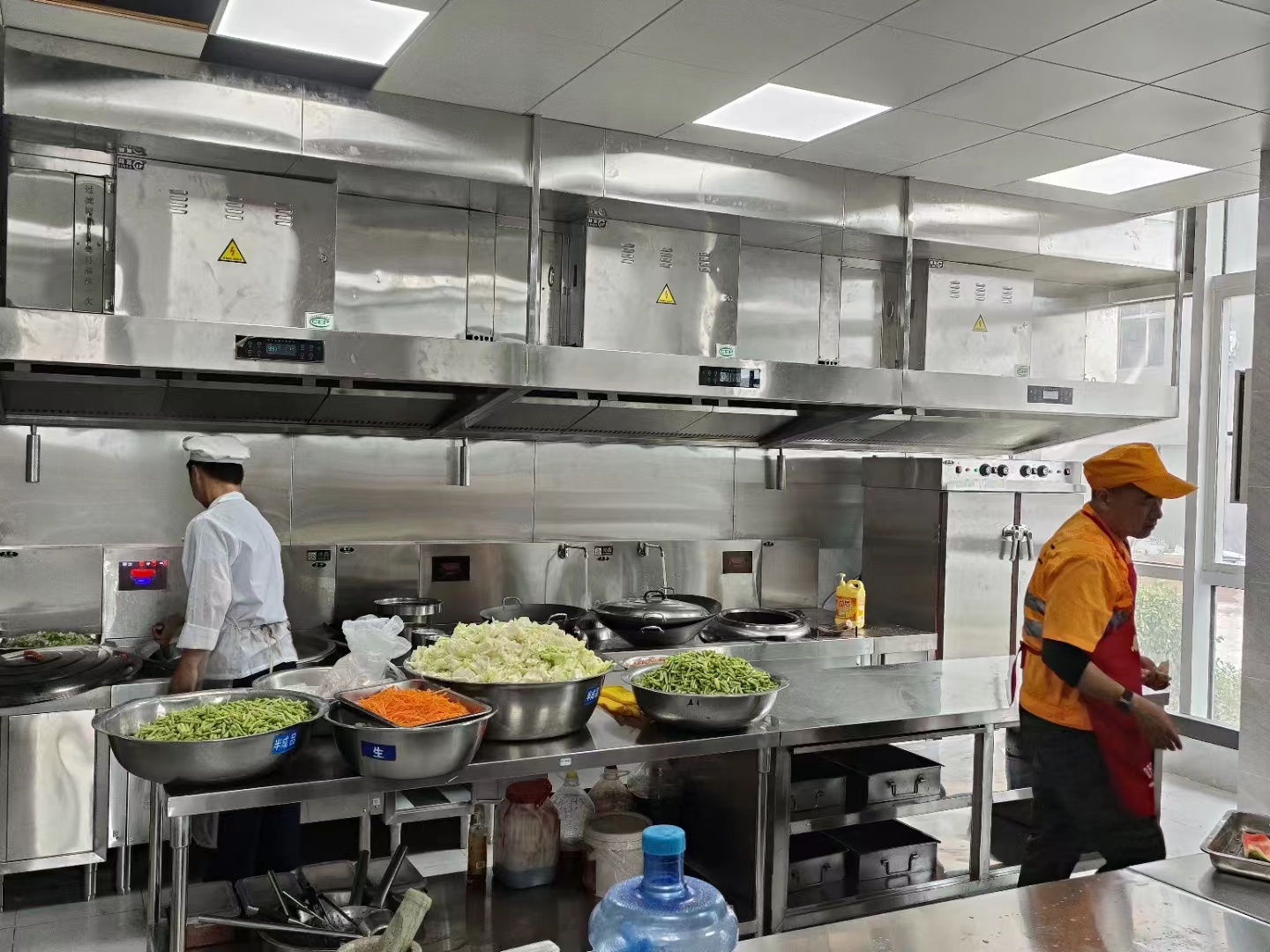
A commercial kitchen ventilation system is a solid investment. It's the same reason you buy an iPhone to get better game loading speeds or sharper pixels. It's worth spending some money to get a better life experience.
If you are a true expert in commercial kitchen ventilation systems. Ventto welcomes you to the factory and exchange technology with our R&D team. Or share your insights on the blog here.
This blog will provide newcomers with a detailed introduction to commercial ventilation systems. Because I have wasted a lot of time looking for a complete introduction to commercial kitchen ventilation systems. Some author always retains important knowledge.
What is a commercial kitchen ventilation system?
The commercial kitchen ventilation system supplies fresh air to the kitchen, discharges polluted oil fumes, or adjusts the hot and cold balance. It is also called HVAC (Heating Ventilation Air Conditioner). It includes heating, ventilation, and air conditioning.
Each ventilation system carries different tasks. If a supplier tells you that you can exhaust fumes and supply fresh air at the same time in one system. He is kidding you.
Commercial kitchen ventilation systems include oil fume exhaust systems, input fresh air systems, and balanced ventilation systems. Each system has its unique capabilities. Whether you need it depends on your needs.

(1) Oil fume emission system
It is a ventilation system that must be built in every commercial kitchen. Without this system, the head of the environmental protection department will not give you a consent form to allow your restaurant to open.
It is what I want to discuss. I've had enough of the fumes and odors from cooking stoves, especially on my skin and nasal passages. There is a system that can help you endure these hardships. Why not try to understand it?
(2)Oil Fume Discharge Regulations
You cannot discharge raw oil fumes outdoors, which is not allowed by local environmental regulations and neighbors. According to the UK's <Health and Safety Executive (HSE)> Regulation.
It requires that all workplaces must have an adequate supply of fresh air. If it is a manufacturing workshop, it must have a planned electric ventilation system installed.
Under Section 24 of the Air Pollution Act 1987. The owner of any premises shall use the best practicable means to limit the emission of polluted air and shall not cause a nuisance to surrounding neighbors by emitting fumes in a volume or manner.
United States <ASHRAE90.1>
The United States <ASHRAE90.1> specifies standards for kitchen ventilation and energy-saving strategies. These are some examples, and in many countries, there are clear regulations for commercial ventilation systems.
If you plan to build a commercial ventilation system, it is necessary to understand local environmental regulations in advance.
What does the oil fume exhaust system consist of?
Back to the topic, we can talk about the oil fume emission system. What does the oil fume exhaust system consist of? It is not difficult to understand. Please imagine how it discharges oil fumes from indoors to outdoors. Maybe you can understand What equipment is needed for the oil fume exhaust system.
Commercial exhaust hood
Above the cooking stove, there is a huge thing looming over the cooking stove. It completely covers the cooking stove and is a commercial exhaust hood. It is a devourer of oil smoke.
Some fans installed on the front baffle rotate at high speed to suck the oil fume generated by the cooking stove into the range hood cavity.
Choosing the right range hood for your kitchen can be difficult if you don't pick up some hidden tricks from the manufacturer. These tips can help you gain more leverage in price negotiations with commercial ventilation stores. If you want to save costs, then don’t forget to continue reading below.
Commercial exhaust hoods come in different types, each suitable for different types of cooking. I once received a question from Toby, a restaurant owner, on Quora.
How to Choosing the right range hood for your kitchen?
He asked me why his range hood couldn't capture and remove the fumes. I asked him whether he purchased a Type I range hood or a Type II range hood. Toby said it is a Type II range hood. The question arises here. Why? I think you are smart enough to already know the answer.
Type I range hoods
It can capture and remove grease, oil mist, or other solid contaminant particles produced by fryers, wok cooking equipment, gas stoves, or barbecues. It usually requires the installation of a fire suppression system, to prevent flames from destroying the equipment or kitchen.
Type II range hoods
It uses dynamic condensation technology to remove steam, odors, and heat and is installed on dishwashers, steam cabinets, or ovens. It does not require the installation of a fire suppression system. Now let me ask you, which range hood should Toby buy?
Of course, we can not only choose a range hood based on the type of cooking, but some differences in appearance or installation methods also make it easier for us to distinguish different commercial exhaust hoods. To make it easier for you to review this information, I've created a table.
Type |
Picture |
Installation Mode |
Application |
Island Hood |
|
Suspended above the stove or on the counter, with the output duct running through the ceiling |
Commercial Kitchen with enough space |
Ductless Hood |
|
Suspended above the stove or on the counter, the exhaust vents can be installed on walls and ceilings. |
Commercial kitchen with compact space |
Downdraft Hood |
|
Embedded under the stove or cabinet, the output pipe is under the stove or under the floor |
Commercial kitchen with compact space |
You want to understand a person. It is not enough to look at his appearance. You must understand his personality, abilities, and conversation. Choosing a suitable commercial exhaust hood also requires this process.
You should focus on verifying the technical specifications of the commercial exhaust hood, which determines whether you can benefit from this set of equipment.
(1) CFM rating
It represents the amount of fumes extracted by the commercial exhaust hood per hour. It has to do with the size of your commercial kitchen, the type of cooking, and the number of burners.
It is not difficult to calculate. You only need to count how many burners there are in a commercial kitchen. Each burner produces approximately 3000m³ of oil smoke per hour. Multiply the number of burners by 3,000 to find the amount of fume produced per hour in a commercial kitchen.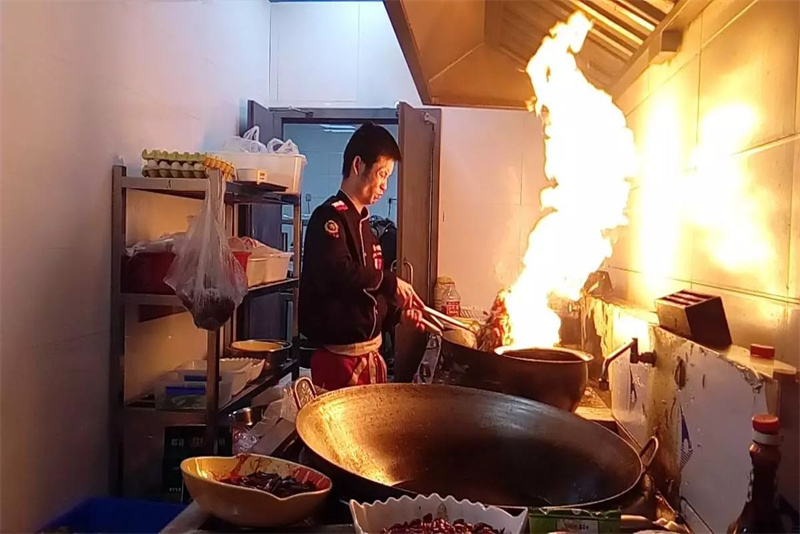
The amount of smoke in a commercial kitchen should be equal to the exhaust volume of a commercial exhaust hood.
If you want to learn more about calculating fume levels in commercial kitchens. You can read <Commercial Integrated ESP Range Hood High Purification & Save Cost> where I provide more tips. I won’t go into details here, because using the number of burners to calculate the amount of kitchen fume is the simplest way.
(2) Size
It is determined by the sum of all burner sizes. If the total size of all burners is 2.5m, then the size of the commercial exhaust hood must be greater than 2.5m. It is to cover the fumes from all cooking equipment and prevent some fumes from spilling into the kitchen.
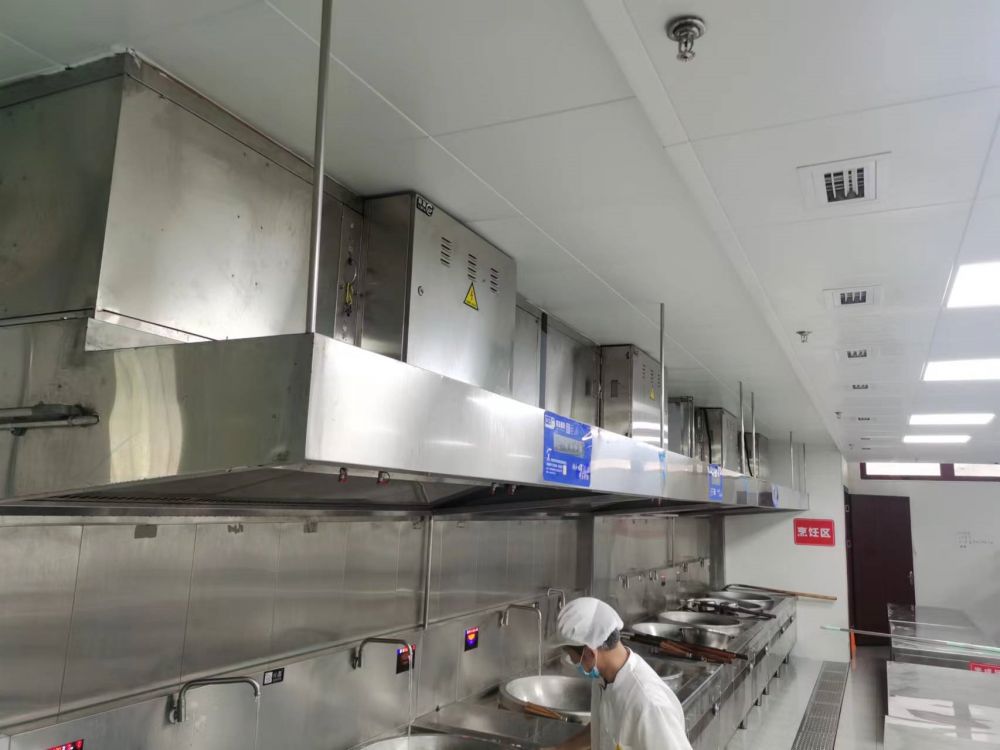
(3) Noise
Noise is a nuisance and I hate almost any kind of noise. It disrupts my mood and makes me less interested in what I'm doing. Imagine that you are cooking in the kitchen and the range hood is running so loudly that you cannot hear other people's voices. You will be eager to close the range hood, and you will even be willing to tolerate the invasion of the fumes.
It is necessary to choose a commercial exhaust hood with low noise. It will not only affect the chef's mood but also affect the customer's dining experience. After all, no one wants to hear a sound like a tractor starting while dining.
Oil Fume Filter
As I mentioned earlier, you cannot discharge raw oil fumes outdoors, which is inconsistent with local environmental regulations. Let me tell you the truth. Commercial exhaust hoods cannot purify oil smoke.
You can think of it as a fume conveying pipe. There is not much difference between the fume you see in the kitchen and the fume you see outdoors. It requires the help of an oil fume filter to help increase the oil fume purification rate to 65% to 95%.
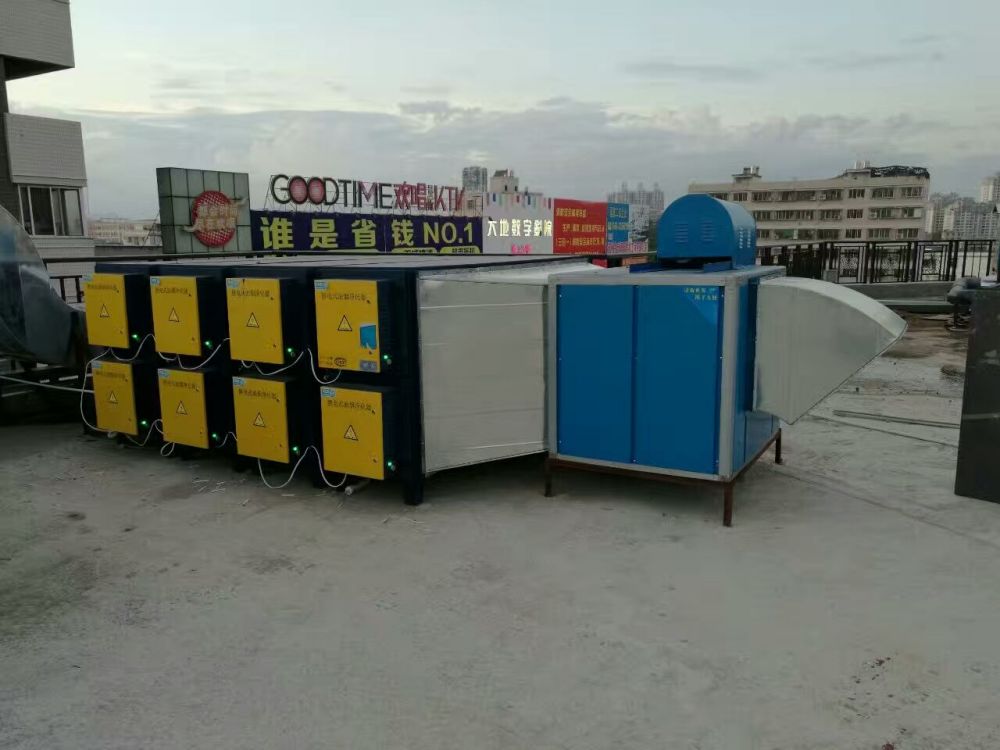
(1) Mechanical Oil Fume Filter
Commercial exhaust hood requires an oil fume filter, which is ancillary equipment. The oil fume filter is divided into mechanical filter (stainless steel filter), electrostatic filter, and activated carbon filter.
The mechanical filter is a necessary component of the commercial exhaust hood. It can intercept large oil particles (visible), but the purification efficiency is not very high.
(2) Electrostatic Oil Fume Filter
Electrostatic filters charge large particles in dirty air as they pass through a high-voltage electrostatic field. It is then adsorbed by the collection plate of the opposite electrode, and the purification rate of the remaining air increases from 65% to 95%.
Stainless steel filter screens of different densities are installed in front and behind the high-voltage electrostatic field. How to understand static electricity?
Have you ever tried rubbing a balloon with your hair and letting it stick to the ceiling? Or have you ever seen metal objects attracted to magnets? These are static electricity phenomena.

(3) Dynamic Carbon Filter | UV Light Deodorizer
Activated carbon filters are suitable for commercial kitchens with a lot of odors. They can remove odors and trap impurities. Many filter manufacturers now use UV deodorizers.
It is a device that uses ultraviolet light to break down oil into carbon dioxide, water, and white powder. It produces a certain amount of ozone, which has people concerned about its impact on their health.
I once wrote a detailed introduction about oil fume filters - <Types of Commercial Oil Fume Purifiers - High-Value Tips from Ventto Manufacturer>. It will help you.
Commercial Exhaust Fan
In the kitchen exhaust system or air supply system. You will always see a huge device. It usually appears on the roof of a building, on the ground, or a flat surface.
It is connected to pipes of different lengths at the front and back. It is a transfer station for oil fumes or fresh air. You can call it a commercial exhaust fan.
Usually, it consists of a motor, a rollerblade wheel, and a protective shell. When the motor drives the blades to rotate at high speed through the belt or shaft, it generates a centrifugal force that discharges the air inside the volute to the outside. According to different functions, commercial exhaust fans are divided into three types.
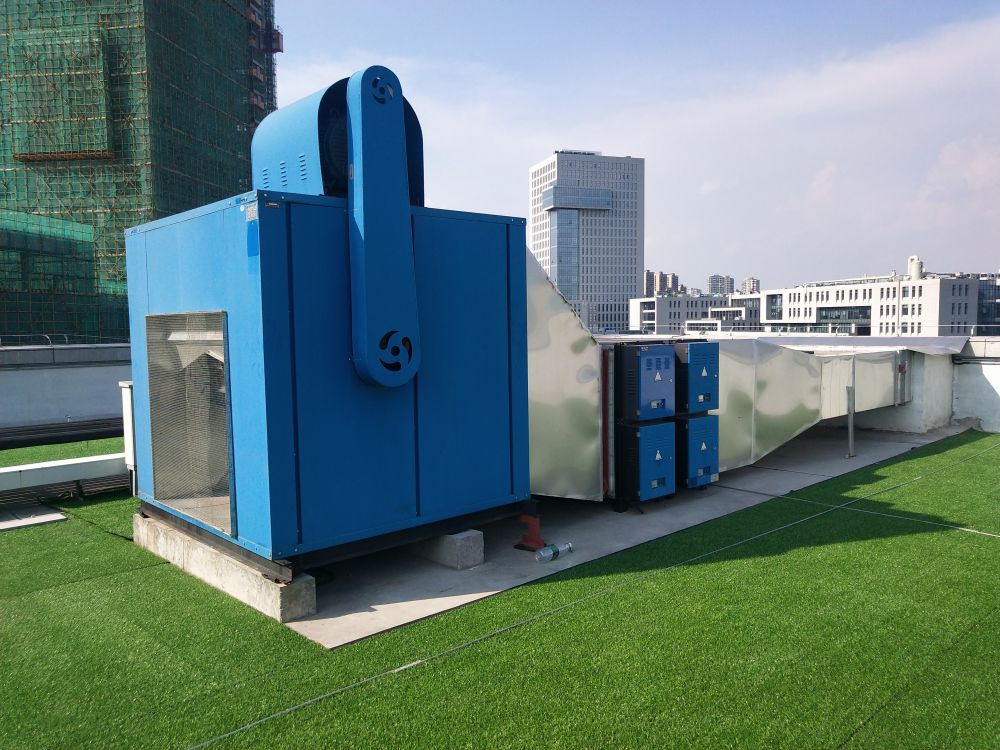
Exhaust system
This type of commercial exhaust fan is installed in front and behind the electrostatic oil fume purifier and is responsible for extracting and discharging oil fume.
It uses a centrifugal impeller to reduce the pressure of the kitchen air to less than that of the outdoor air and then discharges the kitchen air to the outdoors. Its working principle is the same as that of the air conditioner.
Supply fresh air
It is a necessary device for movie theaters, shopping malls, and commercial kitchens, especially in commercial places with thin air. It is usually connected to the air duct. They must be clean and free of contamination. If you don't want the incoming air to contain bacteria or impurities, you must clean and maintain these devices regularly. It means you cannot use an exhaust fan as a input air fan.
The fresh air supply fan consists of a centrifugal fan, an air supply duct, and an adjustable vent. It increases the pressure value of the outdoor air to be greater than the pressure value of the kitchen air and then inputs the outdoor air into the kitchen.
Balanced ventilation
Most commercial kitchens will be equipped with two ventilation systems: an exhaust fan and a supply fresh air fan. It is impossible to input fresh air without emitting oil fumes in the kitchen. It is unreasonable.
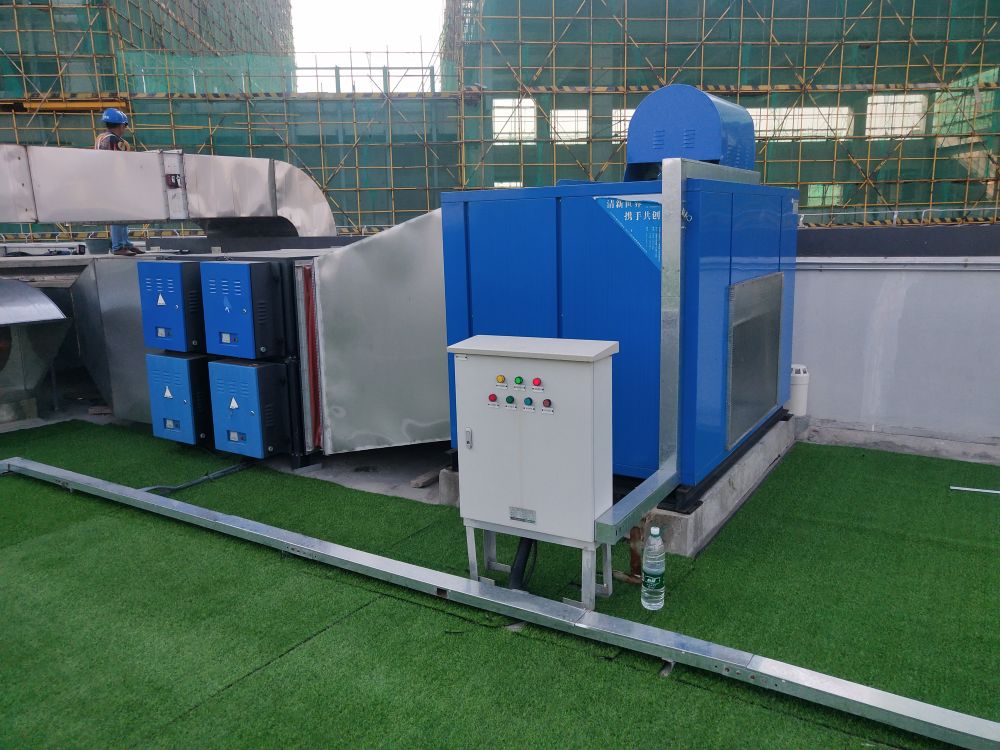
They work by sucking in and exhausting equal amounts of air or fumes from indoors and outdoors without affecting air pressure levels. Ventilation vents need to be installed at appropriate locations in this ventilation system to maximize airflow.
Final thoughts
It is difficult for me to explain everything about commercial kitchen ventilation systems on this page. I will continue to update more knowledge about them in the future, if you are interested, please continue to follow my blog. I will update you regularly. Thanks for reading, and if you have more suggestions, please enter your great ideas in the comments.

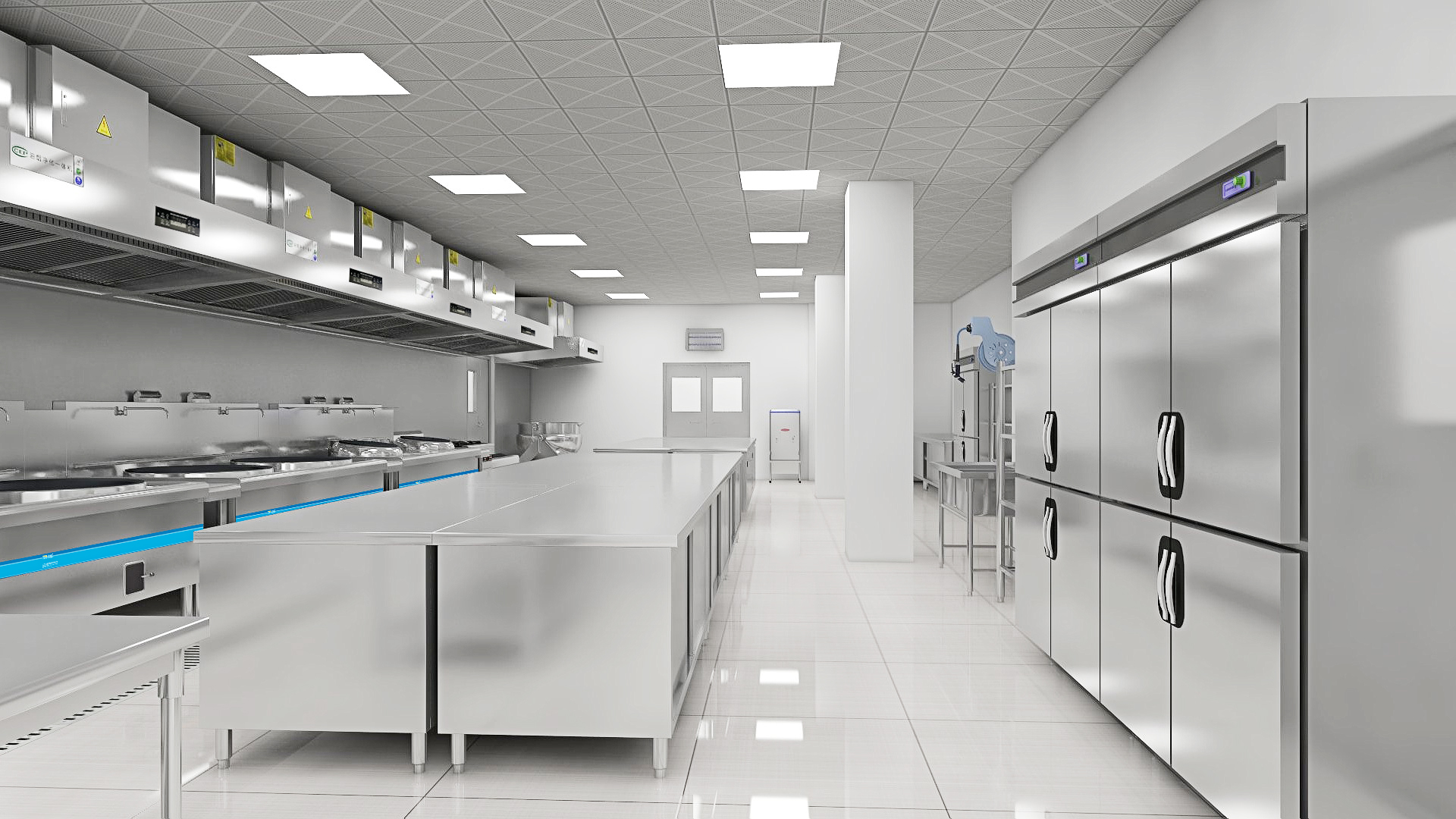 Home
Home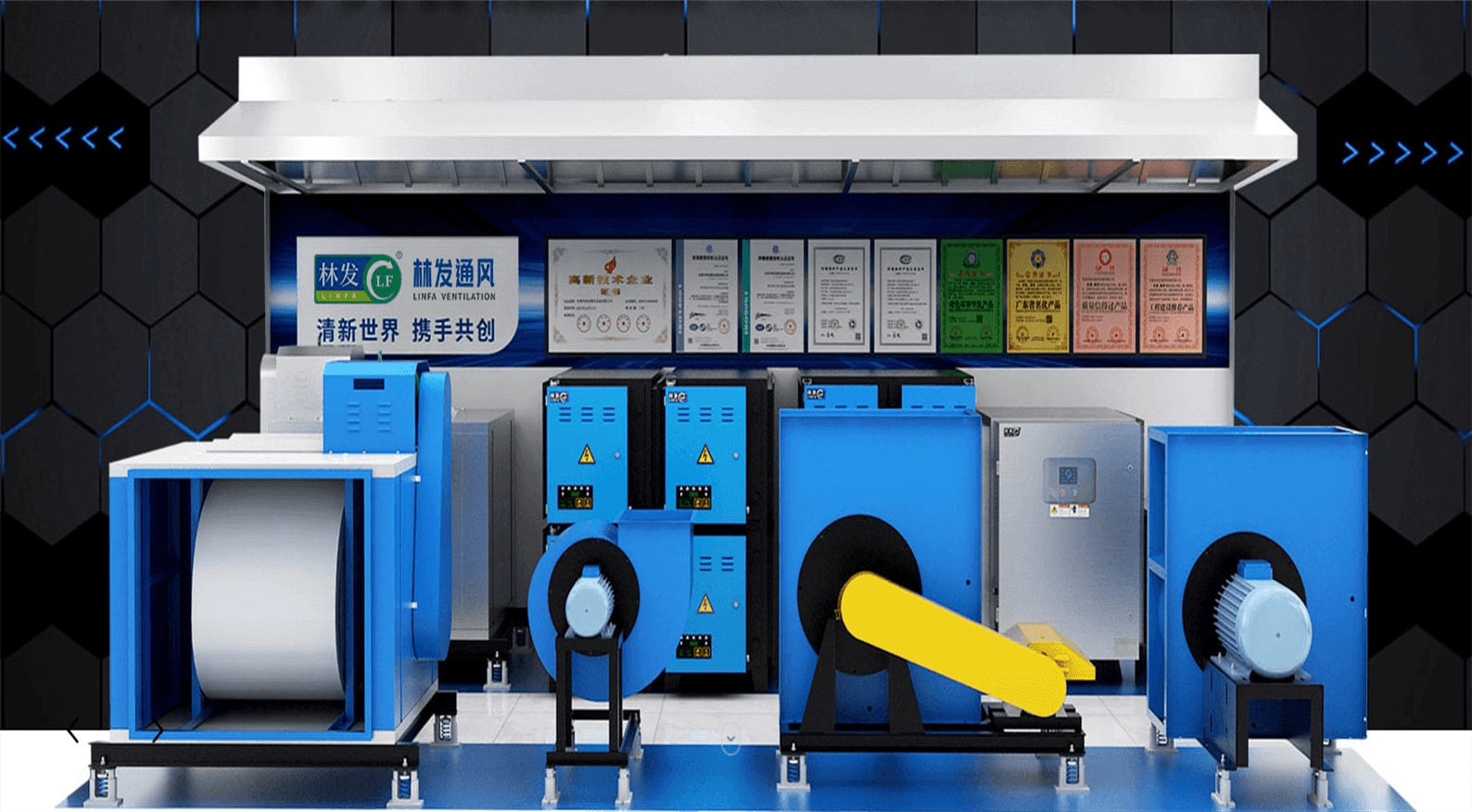 Commercial Ventilation Equipment
Commercial Ventilation Equipment Commercial Electrostatic Precipitator
Commercial Electrostatic Precipitator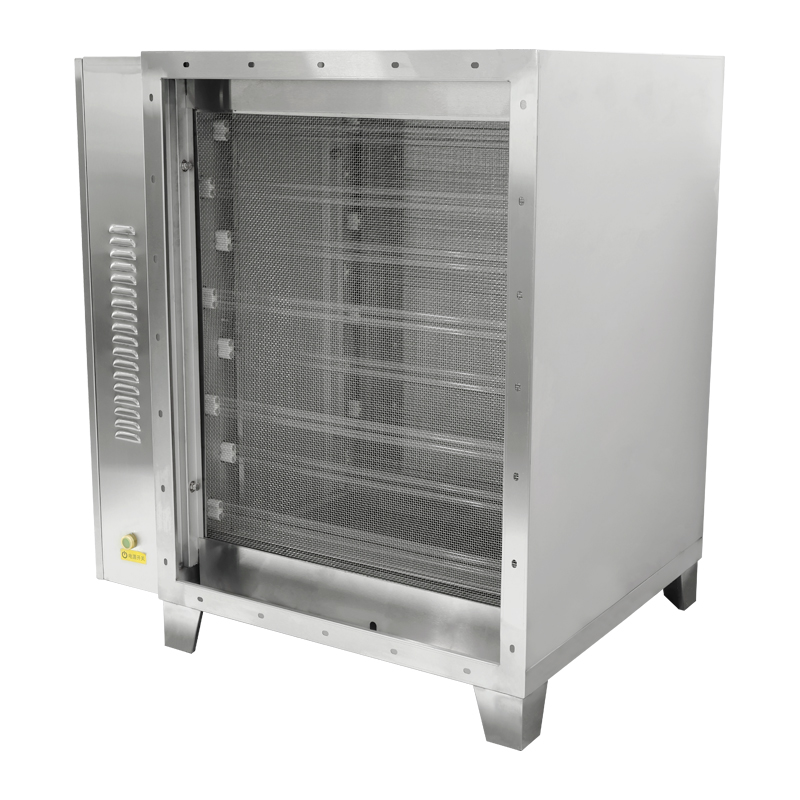 UV Deodorate Purifier
UV Deodorate Purifier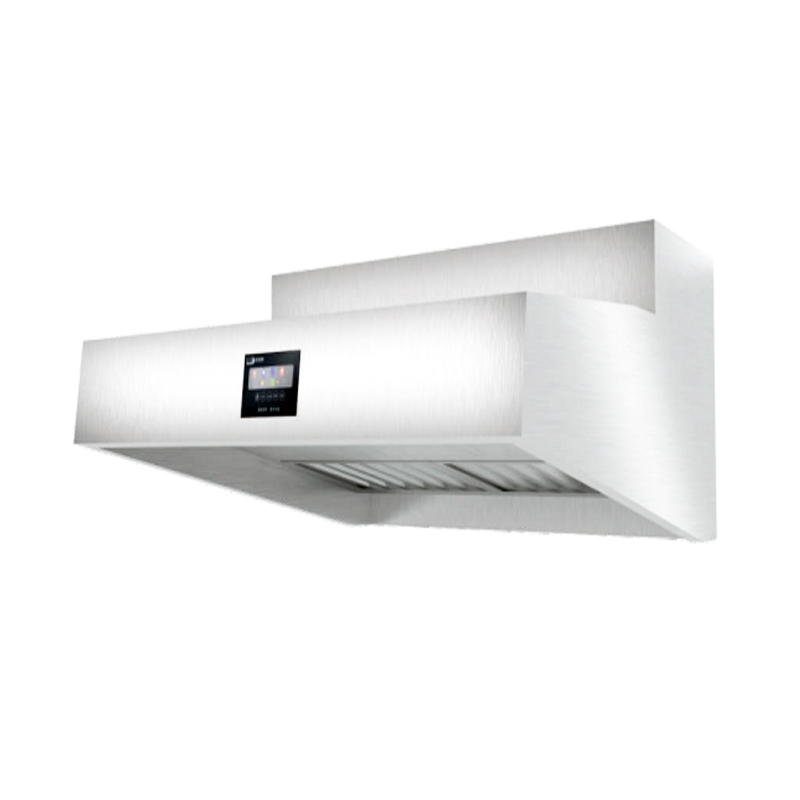 II Commercial Exhaust Hood
II Commercial Exhaust Hood Commercial ESP Range Hood
Commercial ESP Range Hood